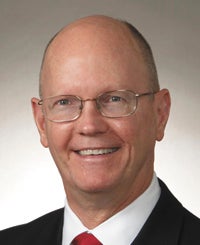Riverland commits to early childhood ed
Published 10:18 am Thursday, January 5, 2012
Column: Terrence Leas, Riverland Comm. College
Recently, Riverland Community College announced a more than $3 million addition of a community Early Childhood Education Center to Riverland’s Austin campus. This capital project, scheduled for completion next fall, addresses one of the top 10 needs cited in recent Mower County United Way survey results.
In a local partnership between the private and public sectors, Riverland will convert about 17,000 sq. ft. in its West Building into an ECEC with a capacity to serve approximately 400 preschool children. Although complete funding is not finalized, The Hormel Foundation has committed $2 million and the Hormel Foods Corporation Charitable Trust has pledged another $1 million to the ECEC.
The Hormel Foundation’s vision is that every child in Austin will have access to a world-class learning facility. By the time children enter kindergarten, they will have acquired the necessary academic, language and social skills for success in the school system and beyond. In addition to achieving the desired educational outcomes, plans will make scholarships available for low-income families. This charitable strategy will ensure greater access to the ECEC, promote student success and secure a skilled workforce.
The ECEC not only benefits young children; it provides a learning laboratory for Riverland students in our human services, nursing, law enforcement and other programs and proves invaluable to students pursuing bachelor’s degrees in education or teaching. While the chosen operator of the ECEC has not been finalized, the ECEC will be an advantageous place for student educators to develop their skills alongside experienced educators.
This project also exemplifies an innovative way of funding important projects at public colleges. With public funding declining and the state government’s continued disinvestment in public education, community colleges must find new methods for funding enhancements at aging facilities.
Riverland has been exploring ways to reduce its surplus facility space. The state provides funding to public colleges, in part, based on its square footage even if that space is unused. The current trend toward online classes makes that funding model even more challenging. When funding is based on students using physical space, the model excludes the 20 percent of our total enrollment now online. Ironically, our appropriation declines even as online enrollments grow. The ECEC will be a major enhancement to the aging infrastructure that once housed the Ag Diesel program and is currently used for storage. The ECEC will have its own public entrance, and the lessee will be responsible for its operational and maintenance costs.
The ECEC is a shining example of how the public and private sectors can partner to encourage lifelong learning. Community college officials also must correct the perception that public colleges are “state funded.” In 2009-2010, only 33 percent of Riverland’s funding came as a state appropriation. New financial partnerships that bridge the public and private sectors inspire better learning opportunities and facilities for those we serve.
Riverland welcomes opportunities to find additional ways to collaborate with our communities to ensure student access and protect high-quality instruction during these financially challenging times.
Terrence Leas is the president of Riverland Community College.


